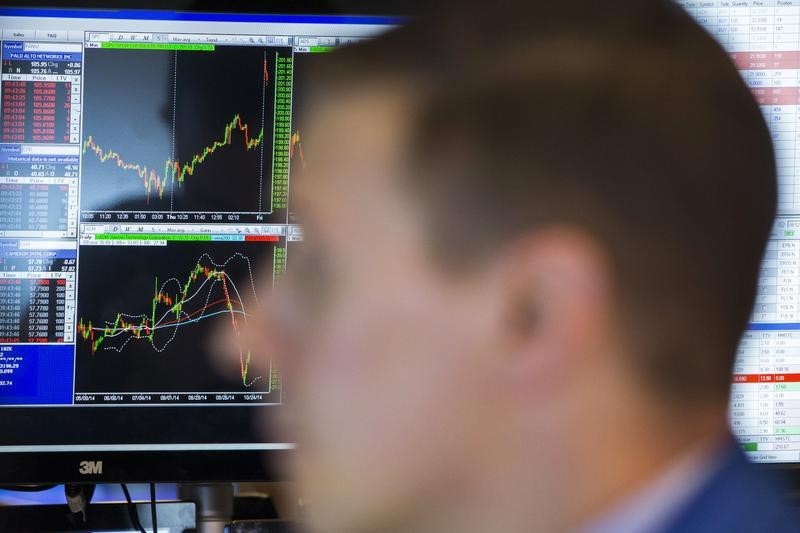After a week of declines in truncated holiday trading, US markets rebounded on Friday as bargain-hunting investors returned and the key indices lifted.
And the Australian market looks set to follow suit today, with ASX 200 futures up 0.3% to 8,264 points.
All eyes will be on Chinese manufacturing data, due later today, which has a flow-on effect to the Australian economy.
Domestically, the spotlight will fall on Wednesday's monthly CPI release, which could shape expectations for a potential rate cut next month.
Meanwhile, global markets will focus on a series of US jobs data, culminating in Friday’s non-farm payrolls report, a key indicator for Federal Reserve policy.
Shares buoyant in US
Over in the US, shares were up for the first time since the holidays, with gains driven by optimism around potential Federal Reserve rate cuts and expectations of looser regulations under the incoming Trump administration.
The Dow Jones rose by 340 points or 0.8%, the S&P 500 gained 1.3% and the Nasdaq added 1.8%.
Despite the recovery, all three indices ended the week lower, with the Dow down 0.6%, the S&P 500 slipping 0.5% and the Nasdaq shedding 0.5%.
Technology stocks led the day’s rally, with Nvidia jumping 4.5% and Super Micro Computer surging 10.9%. Tesla (NASDAQ:TSLA) soared 8.2% while Microsoft (NASDAQ:MSFT) gained 1.1% after announcing an US$80 billion investment in AI-enabled data centres for fiscal 2025.
Energy producers also performed well, with Constellation Energy (NASDAQ:CEG) and Vistra climbing 4% and 8.5%, respectively.
However, alcohol stocks slid following US Surgeon General Vivek Murthy’s recommendation for cancer warnings on alcoholic beverages, with Molson Coors (NYSE:TAP) dropping 3.4%.
The US ISM manufacturing index rose to 49.3 in December, its highest since March, exceeding expectations.
US government bond yields climbed, with the 10-year Treasury yield rising to 4.60%.
Europe more cautious
European markets closed lower on Friday with the FTSEurofirst 300 index sliding 0.6%.
Auto stocks were the worst performers, down 1.7%, after Stellantis reported a 45.7% drop in production for 2024, its lowest level since 1956.
Despite the day’s losses, the FTSEurofirst 300 was up 0.2% for the week. In London, the FTSE 100 fell 0.4% but ended the week with a 1.4% gain.
Currencies and commodities
Global oil prices are up, supported by cold weather in major regions and China’s economic stimulus plans.
Brent crude gained 0.8% to US$76.51 per barrel while WTI crude rose 1.1% to US$73.96. Brent posted a 2.4% weekly gain, with WTI climbing 5%.
Base metals were mixed – copper futures rose 1.3% on China’s announcement of increased funding for economic initiatives but aluminium fell 1.6%.
Over the week, copper dipped 0.5%, while aluminium dropped 2.8%.
Gold prices slipped by 0.5% to US$2,654.70 an ounce, pressured by a stronger US dollar – but bullion was up 0.9% for the week.
Iron ore futures fell 1.2% to US$99.44 a tonne on weak demand and ended the week down 4.3%.
Currencies were mixed. The Euro rose to US$1.0308, while the Australian dollar hovered near 62.12 US cents after dipping below 62 US cents earlier.
The Japanese yen strengthened slightly to JPY157.27 per US dollar.
Market snapshot
- ASX 200 futures: +0.3% to 8,264 points.
- Australian dollar: -0.1% to 62.09 US cents.
- S&P 500: +1.3% at 5,942 points.
- Nasdaq: +1.7% to 21,326 points.
- FTSE: -0.4% to 8,085 points.
- EuroStoxx: -0.8% to 503 points.
- Spot gold: -0.7% to $US2,639/ounce.
- Brent crude: +0.8% to $US76.51/barrel.
- Iron ore: +1.0% to $US105.60/tonne.
- Bitcoin: -0.2% to $US98,056.
Source: ABC
